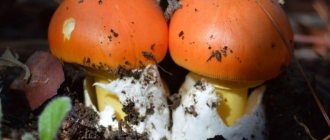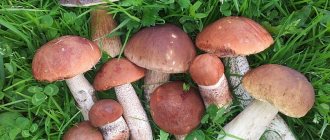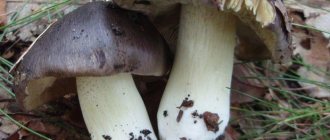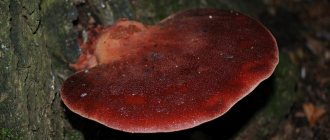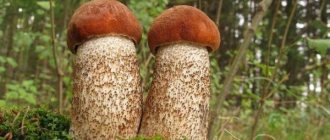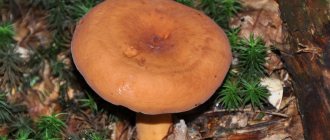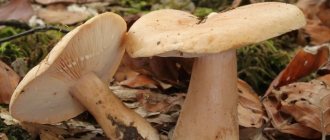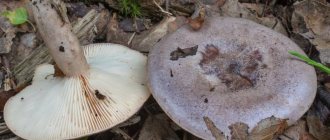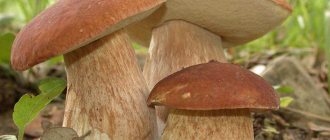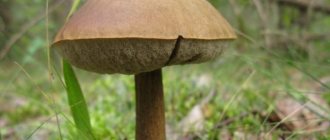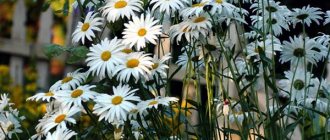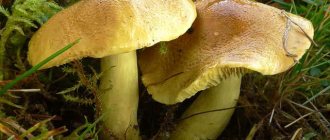General information about the mushroom
- Latin name: Suillellus luridus
- Highest classification: Suillellus
- Squad: Boletaceae
Oak mushrooms are edible mushrooms with a pleasant taste and aroma from the Boletus genus of the Boletaceae family. Their cap reaches 20 cm in diameter, it is grayish-green or brown in color, velvety. The pulp is lemon-yellow, dense, and turns blue when cut. The oak tree is found in oak, deciduous and mixed forests from July to September.
Characteristic features of the variety
Poddubnik belongs to the boletus genus and the Boletaceae family. The species has many representatives that differ from each other not only in appearance, but also in toxicity/edibility. Despite this, all subspecies have common characteristics - the size of the fruiting body and the structure of the mycelium. Photos and detailed descriptions allow you to determine the main differences of this mushroom.
Appearance and structure
Poddubovik belongs to the higher mushrooms, therefore it is characterized by the presence of mycelium and a fruiting body. The mycelium is responsible for attaching the entire body to the substrate and consists of hyphae - long white threads that become thinner towards the periphery. Each hypha is divided by septa into nuclear cells. They can only be examined under a microscope. In appearance, hyphae resemble a tangled web.
You may be interested in:
What does a satanic mushroom look like and is it edible or not (21 photos)? The Satanic mushroom, or Satan, is a rare species that mycologists classify as poisonous. The mushroom is considered...Read more...
The mycelium gives rise to sporulation organs or fruiting bodies that are located above the soil. It is the structure of the fruiting body that allows not only to classify the mushroom according to taxonomy, but also to determine its edibility. The fruiting body consists of a stem and a cap. The size of the cap can reach 30 cm in diameter, and its thickness is 5-7 cm.
Dubovik in section
The hat has a hemispherical shape with wavy edges and a velvety texture. The leg of the oak tree is massive, thickened at the bottom, from 5 cm to 12 cm in height, and 4-6 cm in thickness. The flesh is white, but when pressed it acquires a blue tint. For this he received a second name - bruise. You can see what an oak tree looks like in cross-section in the photo.
Place of distribution
Most often, the boletus is found in mixed and deciduous forests of the temperate climate zone. Poddubnik prefers calcareous soils. Grows in places with good lighting and high humidity. Dubovik can be found near oaks, lindens, and birches, but it can also grow in open areas, such as fields.
This species also lives on rocky surfaces. Most of the oak forests occur in oak groves. This species is characterized by group growth, which greatly facilitates collection. Bruises can be found from mid-summer to September, with the peak occurring in mid-August.
Eating
It is very important to learn to clearly determine whether a given mushroom is an edible species or not, since many subspecies of oak mushroom that are similar to it are poisonous. The poddubnik itself belongs to the conditionally edible class.
Eating poultice
This means that it requires careful heat treatment before cooking and eating. To do this, it is first boiled in boiling water for 15-20 minutes, after which you can start cooking. The taste is very similar to porcini mushroom, which is why it is also often salted, fried and pickled.
You may be interested in:
How to distinguish real saffron milk caps from false mushrooms (28 photos)? Saffron milk caps are a popular forest delicacy in our country with an exquisite taste. Their taste qualities are not inferior to...Read more...
Characteristics of the oak mushroom
hat
— Advertising —
The cap of the oak mushroom is large, 5-15 cm in diameter, massive, in young mushrooms it is hemispherical in shape, “put on” a stalk; as the mushroom matures, it opens up and takes on a cushion shape. The surface of the cap is velvety, from yellowish-brown to gray-brown in color, which are sometimes combined on one cap.
Pulp
The flesh of the mushroom is yellowish in color, dense; when broken, it immediately becomes an intense blue-green color, and then slowly turns black. The flesh at the base of the stem is red. It does not have a clear specific smell or taste.
Leg
— Advertising —
The leg of the oak tree is thick, club-shaped, 5-12 cm high, 3-6 cm thick, yellowish in color at the top and dark at the bottom. Some species have a dark mesh on the surface.
Benefit
Poddubnik contains many useful acids, vitamins and microelements. The main components are zinc, magnesium and iron, which are famous for their restorative properties.
- Zinc is a very useful element that is important for the proper functioning of the gastrointestinal tract. It has the ability to accumulate in the pancreas and takes an active part in digestion. This microelement also helps in proper absorption of nutrients.
- Copper promotes cell restoration, improves metabolism and blood circulation, and also takes an active part in the formation of hormones.
- Iron helps normalize the amount of hemoglobin in the blood. Systematic intake of poultice, even in minimal quantities, fully replenishes the body's need for important components.
- Amino acids significantly improve mental and visual memory, and also fill a person with vigor, energy and strength. In addition, these elements prevent the development of atherosclerosis.
- Beta-glucans are present in large quantities in the common oakweed and have a very positive effect on the human immune system.
Edibility of oakberry
Dubovik is an edible, tasty mushroom that is in demand in cooking. It has fleshy flesh and a delicate smell; the mushroom is well suited for pickling and marinades. Gourmets prefer to fry duboviks and season this dish with creamy sauces.
Dubovik is used as a main dish, side dish, and also for making soups and broths. After heat treatment, the mushroom retains all its beneficial qualities, boils down a little, and gives all dishes a special noble taste. Oak trees are also dried and frozen after boiling them in salted water.
Edibility and taste
All of the above types of oak trees are edible. But they are not used raw. It is necessary to carry out cleaning and heat treatment first. First, the mushrooms are freed from dirt. Then remove the peel from the cap. It comes off easily if you pry it on one side with a knife and pull. You just need to scrape the leg with a knife, removing the top layer of skin.
Also learn about growing champignons in a greenhouse.
Then the fruits are washed well under running water. Place in a saucepan, add water, add a whole onion. Boil for 30 minutes. After this, the broth is drained and the manipulation is repeated again. Boiled mushrooms are drained in a colander. They wait until they drain and grind them at their discretion. Then fry in butter with onions and season with sour cream.
The product in question can be added to soups, sauces and marinades can be made based on it. The finished dubovik has a pleasant taste, slightly reminiscent of tender meat. Dried oak trees are also widely used in cooking as a seasoning.
Did you know? The tinder fungus, which grows on tree trunks, can live for about 80 years.
Types of oak mushroom
Olive brown oak (Boletus luridus)
The diameter of the mushroom cap is 5-20 cm, it is hemispherical or convex, sometimes flattening with age. The color of the cap is olive-brown, variable. The surface of a young mushroom is velvety and becomes slimy in humid weather. When touched, the cap becomes covered with dark spots. The pulp is yellowish in color, dense, the bottom of the stem is red, when cut it quickly turns blue, then brown, the taste is not sharp, the smell is not pronounced. The stem is 6-15 cm in height and 3-6 cm in thickness, club-shaped, with a tuberous thickening, yellow-orange in color with a red-brown base. The stalk has a brownish-red mesh pattern.
The fungus forms mycorrhiza with oaks, beeches, and sometimes with birch; it grows in light, warm places, in deciduous and mixed forests. In general, oakberry is a heat-loving mushroom and is found in Europe and the Caucasus. The season lasts from July to September, mass fruiting occurs in August.
Conditionally edible mushroom. It is used in food pickled (citric acid lightens the oak pulp that turns blue when cut), and dried. When cooking, careful preliminary heat treatment is necessary, since this type contains toxic substances that are destroyed during cooking. Raw or poorly cooked olive-brown oak can cause intestinal upset. It is not recommended to consume the mushroom with alcohol.
Speckled Oak (Boletus erythropus)
The cap is 5-20 cm in diameter, hemispherical, pillow-shaped, rounded-pillow-shaped. The surface of the cap is velvety, matte, sometimes slimy, and becomes bare with age. The cap is colored in chestnut-brown, dark-brown, dark-brown, black-brown tones, sometimes with an olive or reddish tint, and becomes dark when pressed. The pulp is yellowish or bright yellow, in the stem it is reddish or brownish, turns blue when cut, the taste and smell are not pronounced. The leg is 5-15 cm in height and 1.5-4 cm in thickness, cylindrical or tuberous in shape, thickens towards the bottom, yellow-red in color, no mesh pattern, but there may be individual spots and dots.
The fungus forms mycorrhiza with beech, oak, spruce, and fir. Grows in deciduous and coniferous forests, on acidic soils, sometimes found in swampy areas, among mosses. The distribution area of the species includes Europe, the Caucasus, Eastern Siberia, sometimes also Western Siberia and the south of the Far East. The season begins in mid-May and lasts until October, bearing fruit en masse in July.
Conditionally edible mushroom, used in food after boiling, suitable for drying. Sauces and side dishes for meat dishes are prepared from this type of oak wood.
Cooking
Thanks to its beneficial composition and excellent taste, this product is widely used in various areas of production.
There are a wide variety of methods for preparing subdubnik. But before preparing any dish, the fruiting bodies are boiled, since they are recognized as conditionally edible.
First, the mushrooms are washed twice in clean water. Then cut into pieces of the required size, transfer to a saucepan, add water, and add a little salt. You need to cook for 15 minutes, then boil again for the same amount of time. At each stage the water is changed.
Soup with subdubniks
Required components:
- carrots and onions - 1 pc.;
- potatoes - 3-4 pcs.;
- boiled whole mushrooms - 5-6 pcs.;
- vegetable oil - 1-2 tbsp. l.;
- salt, spices - to taste.
The fruiting bodies are crushed into pieces, then transferred to a saucepan, filled with water, and simmered over low heat, remembering to periodically remove the foam. After this, salt and pepper to taste.
While the mushrooms are cooking, you can peel the onion, finely chop it, grate the carrots on a coarse grater, and fry it all in vegetable oil until golden brown.
Cut the potatoes into cubes and add them to the mushrooms along with the frying. Cook until the potatoes are fully cooked.
It is advisable to serve this soup with sour cream and chopped herbs (dill, parsley).
Marinated podduboviki
Podduboviki are delicious when marinated.
For pickling you need 1 kg of pre-boiled fruit bodies. Place them in a saucepan with water, add some salt, and cook for 15 minutes.
Then the broth is drained, poured again with clean water, a little salt, a couple of black peppercorns and a bay leaf are added, and boiled for the same amount of time.
Next, you need to prepare the marinade to your taste from water, salt, sugar and spices. Add 1-2 tbsp to it. vinegar and 2 pinches of citric acid (if your recipe does not call for citric acid, do not add).
Advice. When marinating, rely on your marinade recipe, and additional ingredients can be found on the Internet or in a cookbook.
Place the mushrooms in a colander, and when the liquid has drained, place them in a saucepan, pour over the marinade, boil for 5 minutes and transfer to a jar, pour over the remaining brine after cooking, pour vinegar on top, close the lid tightly and take it to the basement for storage or put it in the refrigerator.
Solyanka mushroom
To prepare this dish you will need:
The preparation of this dish consists of several stages.
- Pre-boiled mushrooms must be cut into small pieces.
- Fry sliced mushrooms along with finely chopped onion in vegetable oil.
- After 10 minutes of frying, add the pickled cucumber cubes.
- Chop half the cabbage and simmer in a casserole over low heat for about 30 minutes. Add sugar, tomato paste and spices to taste.
- Combine the cabbage with the roast in one bowl, add a little water, and place in the oven to bake at 180°C for 10-15 minutes.
The finished dish is served with sour cream and finely chopped herbs.
For your information. To enhance the taste, you can add a little sauerkraut to the dish. In this case, so that the hodgepodge does not turn out sour, you cannot put pickled or salted mushrooms in it. For these purposes, fresh or boiled are better suited.
Mushroom paste
To prepare the aromatic paste you will need several ingredients:
- boiled mushrooms - 200 g;
- grated hard cheese - 200 g;
- low-fat cottage cheese - 100 g;
- chopped walnuts - 2 tbsp. l.;
- mushroom broth - 10 tbsp. l.;
- finely chopped dill or parsley - 2 tbsp. l.;
- vegetable oil - 1-2 tbsp. l.;
- salt, pepper - to taste;
- parsley - for decoration.
Fry the boiled mushrooms in vegetable oil until golden brown, and after cooling, grind in a blender. Mix the cottage cheese, pureed through a sieve, with grated cheese, add to the mushrooms, salt and pepper. Add walnuts and sprinkle it all with herbs. Blend again with a blender until smooth.
Spread the resulting mushroom sauce over the pasta. Before serving, garnish with parsley.
Poisonous and inedible types of oak mushroom
Kele's Oak (Boletus queletii)
Inedible mushroom.
The diameter of the cap is up to 15 cm, the shape is round, convex. The skin color is chestnut-brown, the surface is dry, the young mushroom is velvety, gradually becoming smooth. The pulp is fleshy, dense in structure, yellowish in color, brown in the stem, turning blue when cut. The stem is 4-15 cm in height, 1-3.5 cm in thickness, cylindrical in shape, thickens at the base, solid. There is no mesh pattern or scales on the surface of the leg; it is smooth and yellow-brown in color.
It grows in deciduous forests, a rare species. The season lasts from May to October
Satanic mushroom (Boletus satanas)
Poisonous mushroom.
The diameter of the cap is 8-30 cm, the shape is hemispherical or rounded-cushion-shaped, in a mature mushroom it becomes prostrate. The surface is smooth or velvety, dry. The cap is painted in whitish, gray, green-gray colors, sometimes with a yellowish or ocher tint; greenish or yellow-pink stains are noticeable. The pulp is white or yellowish, turns blue or red when cut, reddish in the stem, and has an unpleasant odor in old mushrooms. The stalk is 5-15 cm in height and 3-10 cm in thickness, ovoid or spherical, with age it becomes tuberous, barrel-shaped or turnip-shaped, tapering upward, the structure is dense. The leg is yellowish-red on top, bright red or orange-red in the middle, and brownish-yellow at the base. On the leg there is a mesh pattern of rounded cells.
The mushroom grows in light deciduous forests next to oaks, beeches, hornbeams, hazels, chestnuts, lindens, and on calcareous soils. The distribution area includes Southern Europe, the south of the European part of Russia, the Caucasus, and the Middle East. The growing season is from June to September.
Where it grows, in what forests and how to collect
The beginning of the fruiting period of the poddubnik falls in May and ends in the fall. The fruit grows under both coniferous and deciduous trees. Most often, the mushroom can be found next to spruce, fir, oak and beech, which form mycorrhiza with it.
Poddubniks are very fond of acidic soil, and you need to look for them in swampy areas or among mosses. This variety is widespread in Europe, Eastern Siberia, the Caucasus and the European part of Russia.
The rules for collecting mushrooms are no different from those that apply when searching for other edible mushrooms. The fruit must be carefully cut or twisted out of the soil. To fold oak trees, it is recommended to use a wicker basket or basket. You should not throw the fruits into a bag, otherwise their structure will be easily damaged and they will quickly deteriorate.
Growing oak at home
To grow oak trees at home, select a darkened area of 2.5 to 3 m2, make a depression of about 30 cm in it, and fill it with a nutrient mixture in the following layers:
- the first layer (at the bottom) of fallen leaves, grass, dust, wood bark (10 cm);
- the second layer of manure humus or soil from under trees (10 cm);
After the second layer, grain mycelium is scattered over the entire area of the site.
- the third layer consists of plant residues, like the first (3 cm);
- fourth layer of garden soil (3-5 cm).
After sowing, the area is moistened by drip until the mushrooms appear, and after they appear - only in very dry and hot weather.
The first harvest appears 1.5-2 months after planting, after which the mushrooms grow every 1-1.5 weeks. In the open air, oak trees grow from May until late autumn. The lifespan of the mycelium is up to 5 years.
Use in cooking and medicine
Since ancient times, speckled boletus has been very popular in various ways. After soaking, it can be boiled and fried, pickled, fermented, soaked in a barrel, or even dried. It has high nutritional value and contains vegetable protein. It is better not to give this delicacy to children under 5 years of age, since the children's gastrointestinal tract is very weak for digesting complex proteins.
The preparation plan for harvesting mushrooms is always the same:
- oak trees are cleaned of large particles (spruce needles, moss, leaves and small debris), the skin is removed from the cap, washed and soaked for 6-8 hours;
- the old water is drained and the mushrooms are filled with new water;
- the product is boiled, after which they can be sealed in jars, fried, cooked in soup, etc.
In medicine, mushrooms are valued for their high content of manganese, copper and zinc. These microelements are important for the full functioning of the nervous system. The one-time daily dose of mushrooms for an adult is no more than 200 grams in finished form. They cannot be combined with fish and meat (it is better to eat them separately from other types of protein).
Did you know? In China there is a science called fungotherapy. It involves treating diseases with mushroom products.
Mushroom protein is very rich and takes a long time to digest; if you eat too much, you may experience abdominal pain or even indigestion. Collected and prepared in the correct way, oak trees will decorate any holiday table. Everyone will love them, because they are a great cold appetizer and a great addition to other treats.
Interesting facts about the mushroom
- Thanks to their composition, oak leaves strengthen the immune system. In medicine they are used as a means to treat malignant tumors. The amino acids contained in oak trees improve memory, coordination of movements, increase mental activity and reduce the development of atherosclerosis. Tinctures and balms prepared from oak leaves have been used since ancient times for chronic fatigue, depression, overwork, and diseases of the nervous system.
- Oak mushrooms are useful and edible mushrooms, but during collection they can easily be confused with the poisonous satanic mushroom, which resembles oak mushroom in appearance. The main difference between these species is the sharp and unpleasant smell of the satanic mushroom, as well as the greenish-gray color of its cap.
Processing and Application
In order to be able to eat the oak mushroom, it should be soaked for half a day, during which time it is necessary to change the water to clean water every 1-2 hours. Then they are boiled and only after that it can be prepared according to the recipe you like. Although there are few toxins in this mushroom, they are still destroyed during cooking. If mushrooms are not processed properly, this can lead to gastrointestinal problems.
Oak mushrooms can be pickled, and if you also add a little citric acid to the jar, the mushroom will retain its color even after long-term storage.
You can also first boil the dubovik, then fry it, seasoning it with your favorite sauce. In addition, mushroom-based soups, sauces, and dressings are made in addition to side dishes. Even with heat treatment, oakwood does not lose its value, smells good and has good taste.
Value in medicine
In folk medicine, oakberries became famous as a medicine against malignant tumors. For a long time, lotions and balms have been made from these mushrooms, the application of which reduces fatigue, eliminates depression, calms the nerves and eliminates fatigue.
How to cook delicious poddubnik
Before preparing any (first, second) dish from this mushroom, you should first boil it a couple of times, draining the water. The first time they are boiled for about 1/6 of an hour, the water is drained, new water is poured in and boiled again, this time for at least 1/3 of an hour. And only then is this mushroom ready to be added to soup or a second dish. Moreover, the preparation of such dishes is no different from preparing them with the addition of beef or chicken.
Poddubnik mushroom soup is tasty, aromatic, a characteristic feature of this mushroom is that it does not boil down when cooked for a long time.
It can also be pickled. One of the recipes for delicious pickled oakberries is as follows:
- For 1 kg of mushrooms you should take 2 tbsp. spoons of table vinegar, a little citric acid. The marinade is prepared as follows:
- For 1 glass of water - several pieces of black peppercorns, 15 g each of sugar and salt, 2-3 large cloves of garlic, 2-3 bay leaves, dill and cloves - to taste.
Botanical description
The characteristics and description of this species from the family Boletaceae or Boletaceae allows you to understand what a real edible mushroom looks like:
- the cap of an adult mushroom reaches a diameter of 12-15 cm;
- the shape of the cap is cushion-shaped, with a dry and velvety surface;
- the color of the skin on the cap is brown or olive-brown, but there are also specimens with yellowish-brown or reddish-brown caps;
- with age, the color of the cap of the cape acquires a rather dark shade;
- the mushroom pulp is thick and fleshy, has a whitish or slightly yellowish color in the cap and a reddish tint at the base of the stem;
- a characteristic feature is the bluing and acquisition of a pronounced brown tint as a result of pressing on the pulp or on the cut;
- tubes of a narrow type, yellow or olive-yellow in color;
- pores have an orange-purple tint and are prone to turning blue as a result of mechanical damage;
- the height of the stem of an adult mushroom does not exceed 10-15 cm;
- the base of the leg has a pronounced expansion;
- the surface of the leg is yellow-orange, in the upper part there is a reddish-brown mesh pattern.
Several species with similar morphological characteristics that grow on the territory of our country can be classified as poddubnik.
Is the speckled oakberry edible or not?
Speckled Oak (Boletus erythropus) is part of the Boletaceae family. It is considered conditionally edible. It also has other names:
- red-legged boletus;
- bruise;
- boletus;
- granular boletus;
- grain-footed oakwood;
- subdubnik.
Description
The cap of this mushroom is matte, resembles velvet, and may have mucus. Its size ranges from five to twenty centimeters. It is shaped like a pillow or has a more rounded, spherical shape. The cap is dark brown, black-brown, dark brown, sometimes with an olive or red tint. As the mushroom ages, it becomes bare. When its surface is pressed or damaged, this place darkens and takes on a bluish tint.
The inside of the mushroom is yellow. When a mushroom picker cuts it, the cut area almost immediately turns blue or has a greenish tint. The leg has a barrel-shaped or cylindrical shape, and can thicken towards the bottom as the oak tree grows. The inside of the leg is brown or red, there is no taste or smell. On the outside there are reddish scales and specks. Its color is red-yellow, there is no mesh. Dimensions range from five to fifteen centimeters in height, and up to four centimeters in diameter.
If you look under the cap, you can see olive, yellow-green or yellowish tubes. There are also small round pores that are yellow in color and turn reddish or orange as the mushroom ages. They also darken when injured. The spores are brown-olive, their shape is spindle-shaped, and smooth to the touch.
Places where speckled oak grows
Europe, Eastern Siberia, the Caucasus are the places where this mushroom grows. In the western parts of Siberia and the East it is found much less frequently. Just like in Russia.
Likes to settle under trees such as beeches, fir trees, oaks, and firs. Its roots form a symbiosis with the rhizomes of trees. It also grows in marshy soil, along with moss. The choice of place of growth is influenced by its love for acidic soil. New mushrooms appear from May to October.
Is it possible to eat speckled oakberry?
These mushrooms are conditionally edible. To eat them, you need to cook them for about 15 minutes and then pour out the water in which they were boiled. After this, various dishes can be prepared from oak trees, used for side dishes or sauces. After cooking, they practically do not decrease in size. These mushrooms have a lot of aromatic pulp. When fried, dishes turn out very tasty, their beneficial properties are not lost, and they give off a pleasant aroma. In addition, duboviks can be prepared in any form: pickled, dried, salted. Mushrooms for every taste.
Similar mushrooms
These mushrooms, like many others, have many “brothers” similar to themselves. You need to know this and be able to distinguish between them. These include:
- The yellow boletus usually grows in the western part of Europe. It differs from a bruise in its brown-yellow color.
- Kele's Dubovik is rare. Prefers calcareous soils. It differs in the color of the cap: it is lighter and brownish-yellow in color.
- The olive-brown oak tree has a speckled mesh pattern on the stem.
- Satanic mushroom is a poisonous species. In this case, it is especially important not to confuse the mushrooms. It differs from oak wood in its unpleasant odor. In addition, when cut, it does not immediately turn blue; it first turns red.
Useful properties of speckled oak
Dubovik contains useful substances:
- Microelements: copper, zinc, manganese, iron. Copper promotes the formation of blood cells, participates in the body's metabolic processes and the synthesis of pituitary hormones. Zinc improves the functioning of the gastrointestinal tract. Increases the absorption of various nutrients, improves food digestion due to accumulation in the pancreas. Iron is necessary for the formation of hemoglobin, which carries oxygen in the body. A very small portion of mushrooms contains a whole daily dose of microelements.
- Amino acids improve memory, mental abilities, and lead to normal coordination of movements.
- Beta-glucans are beneficial for the immune system and have a negative effect on cancer cells.
In addition, these mushrooms reduce the risk of atherosclerosis.
Eating speckled oakweed!
It must be remembered that mushrooms are conditionally edible and should be consumed with caution. Children under twelve years old should not eat mushrooms. The fact is that they are specific and “heavy” food. They contain chitin, which has a structure intermediate between plant and animal. It is useful for adults, but is not absorbed in the gastrointestinal tract of children.
https://howtogetrid.ru/dubovik-krapchatyj-opisanie-gde-rastet-yadovitost-griba/
Series of messages "Mushrooms: edible, poisonous": Part 1 - Speckled Oak - description of where it grows, the toxicity of the mushroom. Part 2 - Satanic mushroom - description of where it grows, the toxicity of the mushroom Part 3 - Autumn honey fungus - description of where it grows, the toxicity of the mushroom... Part 21 - Rows and what edible mushrooms look like Part 22 - The most beautiful mushrooms: photos, facts, description.
